|
I see so many young horses, aged 3, 4 or 5, offered for sale and pictured being sent around a course of jumps.
It is done, of course, so that they can say the horse can jump, and to make him more saleable. But this is contradictory. A horse that has been jumped too young is already likely to have been damaged by the activity. It also gives the impression that the youngster is ready to be taken to shows and cross country courses, which puts unrealistic and unfair expectations on the animal. Show jumping can cause severe suspensory ligament injuries, front foot injuries like navicular disease, joint injuries including osteoarthritis, and other physical problems. When a horse takes a jump it puts a huge amount of pressure on the joints, tendons and ligaments of both the front and back legs. Imagine this: a horse might weigh half a tonne (500kg). The rider maybe another 70kg. Now try to work out how many times that will multiply when the horse comes to land with all the weight on the font legs. The stress on the legs becomes absolutely massive every time he lands. Then take into account that a young horse’s bones don’t fuse until they are around 6, so there is the additional risk to all other bony areas in the body, including the neck and spine. Another factor to consider is natural asymmetry. A horse that is not trained to move straight and to carry his weight evenly between his feet will naturally land with most of his weight on his preferred front leg (horses are right or left handed like us). A young horse needs to learn to balance and move straight before being backed by doing Groundwork, Longeing and Work in hand from the ground. Only when they have learned to carry themselves and respond to a set of logical aids that can be transferred to the seat will they be able to carry a rider in balance. If you want to jump please wait until your horse is fully grown (age 7+) and has learned to carry himself in straightness and balance with a rider in all four gaits.
0 Comments
�
One morning in July 2020, I found Marley standing on the muck heap. He was stuck. He must have been standing there for a long time. He had cleverly found the one spot where his feet felt the least uncomfortable, and was reluctant to move. Another morning I found him lying on the deep bend in his stable, quietly whining, a bit like a dog. They say horses don’t cry out when they feel pain. I discovered you they do. According to the Royal Veterinary College (RVC) website more than 7% of all equine deaths are linked to the laminitis, with many animals having to be euthanized. And 1 in 10 horses/ponies develops an episode of laminitis every year. These are truly shocking statistics. This is an epidemic. Even with all the great information that is out there about how to avoid laminitis something is still going badly wrong. We, as horse owners, need to take a long hard look at the way we keep our horses to change this around.
Several years ago, when Marley was first found to be suffering with low grade laminitis with a mild rotation of the pedal bone, the vet told me it was a mechanical laminitis – in other words not a metabolic problem but just that he had bad feet. The recommended treatment was rest on a soft surface. What she didn’t tell me – or possibly didn’t know – is that I needed to find a trimmer who had the ability to trim his feet so that they could maintain a healthy shape. In any case I changed to a new trimmer who was very highly recommended for treating horses with laminitis. But still his feet were no better and eventually his laminitis evolved into a rotation of his pedal bone and full-blown founder. The vet strongly recommended I have heart bar shoes put on his previously shoeless feet. I would now say without hesitation that there is a good chance that he would be dead now if I had taken that route. Instead, I followed my instinct and took the incredibly difficult decision of going against the advice of the vet. I want a horse with functioning hooves. I knew I had to take massive action to get my beloved Marely through this. So I took him to a trimmer that I knew could help him. It meant travelling him 30 minutes in the trailer every 6 weeks because she couldn’t come to my yard. It was a long and incredibly difficult road but it worked and he is now striding out, his hooves are healthy and he’s feeling fantastic! For the first time he is growing really nice, strong feet, and he’s feeling good in his body. This blog is not intended to tell you what to do or what to believe. It is simply an account of my experience and what worked for me. My precious horse suffered intensely and unnecessarily because of my mistakes. And for me it was one of the most traumatic experiences of my life. These are the main points that I have taken away from the experience and would like to share in the hope that it helps other horse owners to avoid making the same mistakes that I did: 1. The trim is key! When I had Marley vetted pre-purchase, I was advised not to buy him because of his poor foot conformation. But everything else about him was perfect so I bought him anyway! He was shod and I was planning to keep him shod. But the farrier found it increasingly difficult to keep his toes back. His feet just wanted to grow forward and out and spread. So he recommended that I take him barefoot. That went well for a while, even though his heels were under run and his feet spread out like dinner plates. But increasingly he was developing long cracks in his feet and was gradually becoming unsound. I changed trimmers several times. When he finally foundered in 2020 I was using a trimmer who came highly recommended. But I had still been having the same problem. His feet kept growing out and the cracks would stubbornly not go away. When I challenged the trimmer about it she told me it would just take time and I had to be patient. So I waited and waited until years went by but things just didn’t get better. All the time in the back of my mind was the voice of the vet saying that he had bad feet – so I sort of accepted that as just the way it is with Marley. Eventually when it got to crisis point I knew I had to do something very different if I was going to save him. I started travelling him to be trimmed by someone I felt hopeful would take a different approach. She took his toes very hard back, at a 90 degree angle to the ground. This trim seemed quite dramatic to me. But she explained to me how it would enable the structures inside the hoof to realign themselves so that his hoof could start to heal. She explained how his toes had been left far too long, and this creates a leverage on the hoof wall which literally pulls the wall away from the laminae. As the laminae become damaged the pedal bone drops and the horse founders. This is what is meant by mechanical laminitis. And with a proper trim it can be put right. Don’t hesitate to change trimmers (or vet) if it’s not working I am ashamed to say I put too much responsibility onto my trimmers in the past. And that part of my reason for not changing trimmers sooner is that I didn’t want to let them down. We spend a lot of time together, chatting. They become friends. And they believe in their own expertise so why shouldn’t we? Unfortunately that is not necessarily in the best interests of the horse. We need to put the horse’s welfare first at whatever personal discomfort to ourselves or the professionals we employ. It’s against my nature. Not only do we feel we have to let someone down. But we also have to find a new trimmer who might do better – or might do worse! Finding the right hoof care professional can be very difficult, and it can take time to see the changes in the horse’s foot. This also applies to your vet, hay supplier, dentist, body worker, and anyone else who has access to your horse. Learn as much as you can about hoof care This one I personally found tedious. I didn’t get into horses to study their feet! But the old saying ‘no foot no horse’ is so true, so we simply have to go there whether we like it or not. We have to take the responsibility upon ourselves. I want my trimmer to tell me exactly what is going on. I want them to share their plan for the hoof and to want to educate me about what they are doing and why. I want to be able to ask the difficult questions and get a clear answer. For this we need to study. To ask questions so that we know what to look for in a good trim and we can recognise when things are starting to go wrong. There are many things to look for and every horse is different. But a basic list is:
2. Keep their weight down Another mistake I made over the early years was allowing him to get a little too fat every year. When a horse is allowed to be overweight year-on- year, gradually they can develop metabolic syndrome. This is what happened to Marley. It’s not as simple as just taking them off the field. All fields are not the same, and the exercise they get moving around and grazing is essential for their wellbeing. My field is small and seemed ideal for my good doers, because I used to rest it over winter and in summer the grass was always well-grazed and short. But my horses got fat as soon as they went on there. This means that the wrong sort of grasses are flourishing in my field and that’s a big risk. So until I can rectify that I have them on a surfaced track around the outside of the field and they are not going on the grass at all. This is working well for us. Marley lost 50kg in less than 2 months when I took him off the field altogether, put him on the surfaced track and put his hay nets around the track to make him search for it. This is the best way to feed adlib. He can also pick at the hedge and the bits of grass around the track. So there is always something to find. But if the hay is in one spot they won’t move. Weigh taping is also surprisingly helpful. It’s motivational to keep a record of their weight every few days or once a week to make sure things are on the right track. Starving horses for weight loss is not a healthy option. It can be incredibly stressful and can make the weight problems worse long-term. Unfortunately this approach is too often recommended by vets. 3. Watch for metabolic syndrome Marley is now very sensitive to grass. If you think your field is unhealthy or your horse might have metabolic syndrome, take it seriously BEFORE laminitis attacks. Ask your vet for a test. Google will give you a lot of information on it. Signs of metabolic syndrome are:
4. Get the forage right By far the biggest part of the horse’s food intake is (or should be) forage. When this is wrong it can make a massive difference to your horse’s welfare. I feed unsoaked low energy meadow hay, as close to adlib as possible. Hay should be locally produced good quality meadow (grass) hay, unsprayed, with a good mixture of grasses. Avoid rye grass, rye grass stalks and straw and have it tested for energy content. The horse needs the valuable micronutrients fond in a good quality mixed hay in order to heal. Soaking washes the nutrients away along with the sugars. For a horse that is not on grass, sudden footiness is very likely to be down to a change in the sugar levels in your hay. And it can have a massive and immediate effect. 5. Limit what goes into their bucket When he was very bad I gave him no feed supplements at all. Nothing in his bucket but grass chaff, a gut balancer (prebiotic and probiotic) and Danillon. This is because their systems can become overloaded and feed supplements can disrupt the gut biome. Now he is stronger I would not use a normal balancer because without balancing the nutrients to your own forage you risk making nutritional imbalances worse. If your horse is only eating hay it’s best to get your forage tested and get a diet plan so that you can balance the vitamins & minerals correctly. 6. Use as much pain relief as needed, but as little as possible I prefer Danillon to Bute because it is less damaging to the gut. What happens in the gut also affects hoof health. I would give Marley as much pain relief as he needed to be able to walk. On the very bad days he was up to 5 sachets. But most of the time it was 2-4. You need to be careful with this, though, and monitor your horse closely. We want the horse to be able to move calmly as much as possible so that the hooves can heal. So my goal was to have him as comfortable as possible so that he could walk, but give him as little as possible to minimise the damage to his gut biome and avoid overloading his system. 7. Encourage or allow movement In order for a hoof to heal it needs movement. Horses kept on box rest are at a disadvantage because their feet are not functioning and are therefore not able to heal so well. The movement needs to be controlled and gentle, to avoid further damage to the hoof. When Marley was very bad he had access to a deep bed in a stable with the door open to the yard and track. This meant he did not have the stress of confinement (stress is a common cause of laminitis). He could move when he felt comfortable enough, and he had the freedom to choose when to rest and lie down. I would not advise doing this if there is a risk of your horse being bullied by others. If he got stuck on the track I would just gently walk him back to his stable and deep bed. As soon as he was able to, and as much as possible, I would walk him in hand. At first with his boots on and just around the yard. Then around the arena on straight lines. Then when he could cope I took him on the lane. It’s best to keep the goal in mind and go without boots as soon as possible. This way the hooves will be more able to cope with different surfaces and they will become stronger and heal more quickly. Now Marley and I are going for long walks on the tarmac road to keep healing and conditioning his feet. 8. Abscesses are to be expected and are part of the healing process – don’t panic! Abscesses are one of the main reasons that so many laminitis horses are euthanized. When the pedal bone drops and separates from the hoof wall, the laminae are damaged. This creates dead material in the hoof that has to come out. When the hoof starts to heal and the pedal bone then starts to realign itself the dead material is pushed out. This is when abscesses occur. Abscesses are very painful and quite debilitating for horses. But most of the time they will burst in a few days. The more the horse moves, the more the hoof can flex and the more quickly the dead material will be able to work its way out. A hoof that is not moving will take longer to heal from an abscess. A shod hoof can’t move and flex like a bare hoof and this also prolongs the pain and potential damage from an abscess. Anti-inflammatories (Bute and Danillon) will slow down the progress of an abscess. We want them to burst as soon as possible to release the toxic material but we also want to limit the horse’s pain. So ideally we would not use them at all. But you would have to be pretty tough to do that! I don’t know if it’s advisable, it’s just what worked for me, but I had a bit of a system going. I would give him a high dose of pain relief for the first few days then take it away. I found that the abscess would burst the following day. Seeing your horse suffering with an abscess can be distressing. And it can make us think this might be time to have them put to sleep. Or other people might make the suggestion. But the horse’s demeaner tells a different story. Marley had several abscesses. He would lift his foot to show me where it hurt. But he didn’t seem terribly bothered by it, apart from the fact that he couldn’t use the foot and it was sore. It’s as if he knew that it was part of the healing process and that it would pass. Once we understand this it makes it much more bearable. Abscessing is a necessary process and it shows that there are changes going on in the foot. Sadly it is common for owners to panic when there is a lot of abscessing and chose to have the horse put down. But it could be the very moment when things are about to turn around! This is what happened in our case. Marley had a nasty abscess in a hind foot that I think had been quietly brewing for a long time. As soon as it burst he turned a corner big-time, and a no more than week later was striding out and walking confidently down the lane. That was Christmas 2020, and we have not looked back since! I remember, when I first started Straightness Training, commenting to one of the instructors how good their eye was, never thinking I would be able to see what they saw just by looking at a horse move, or even just a picture. But then one day, a few years later, I suddenly realised - I absolutely could! I could see as clear as day when a horse is falling through their inside shoulder or outside shoulder, when the inside or outside hind leg is not finding the centre of mass, when there is diagonal, horizontal or vertical imbalance. Essentially my eye can track the centre of mass so I can see what I need to do as a trainer to help the horse to find a better physical (and, as it follows naturally, mental) balance.
This is no happy accident. The only way this came about was by watching clinics and videos. I watched every clinic I possibly could when Marijke de Jong came to the UK. By intently watching and listening to the lessons, was I gradually able to understand what I was looking at, bit by bit absorbing the information like a sponge. Through watching all those lessons with individual horses, each one unique, I was able to see how the smallest shift of the centre of mass affects the horse in such a dramatic way. I learned how to address the different challenges that each individual horse threw up. And most importantly I learned what I needed to change in myself to be the trainer my horse needs me to be. Don’t get me wrong, this is a lifetime study and the more you get attuned to the nuances of what you can see, feel, learn, the more you realise you don’t know. I love to re-watch the videos of my lessons, and the videos in the Mastery course. I love to approach them again with a beginner’s mind, and discover the nuances that I missed before. Because over time, as our knowledge develops we see more details than we did before. And you know what, I always felt that I learned the most at the clinics that I attended without my horse! I could settle down, wrapped up in a blanket, and just relax and absorb the lessons – each one of which I found quite fascinating. I went on my own, but never felt lonely. I always found myself in good company. So I can’t recommend highly enough, if you have the opportunity, go and watch as many workshops with ST Instructors as you possibly can. Go on your own if you have nobody to go with! Allow yourself to be fully absorbed by each fascinating horse and trainer combination. You may not need the lessons now with your own horse but as you develop as a trainer you will certainly draw on the knowledge in future. There is an online workshop on Saturday 20th August 2022. Go here to book your spot. Do you see the horse of your dreams? A magnificent war horse suitable for a king? A pure, innocent, beautiful spirit? Your best friend? Your partner?
Or do you see a machine that eats money and spits out dirt? A scheming, naughty creature? An ugly, fat, misshapen thing? A mean, lazy spirit? A daily chore? What’s your horse’s nick name? Lovely lady? Mr Magnificent? Handsome boy? Superstar? Gorgeous? Or - Old bag? Fatty? Hop-along? Tart? Lazy boy? Dimwit? Trouble? (Believe me, these are the repeatable ones, I have heard far worse!) You might think it doesn’t matter because horses don’t understand English after all. But actually your horse does feel your intention, he picks up your inner picture and resonates on the language you use. Horses are naturally masters of the subtlest body language and energy.
He will respond to your words and become the image you project onto him. Positive, uplifting words will raise your horse’s self-esteem and give him self-respect.
Speaking about our horses with respect and treating them with dignity is fundamental to creating a relationship of mutual respect and enjoyment. Treat me like a fool and I will behave like a fool. Treat me like a king and I will behave like a king. Do you have a great nickname for your horse? I would love to hear about it in the comments below. In my family we have a tendency to talk too quietly, too fast, or in a monotonous tone, or all three at once. Most of what is said is probably quite interesting or funny – at least it would be if anyone could decipher it! So we end up having to repeat what we are saying several times because we simply can’t be understood, and end up shouting and everyone gets annoyed!
This is a pattern that repeats itself and doesn’t seem to improve. If only we could learn to speak clearly the first time around! With horses we strive to use the lightest and subtlest of aids, but we also need to avoid going from a whisper that is too subtle to getting annoyed and shouting, like in my family! If he can’t figure out what we are trying to say our horse is going to be confused and might seem uncooperative. Instead we should take the time to explain more clearly in language the horse can understand. Teach him in simple baby steps the language we want to use and how we would like him to respond. Once he understands the meaning, the aid can become gradually quieter and he will be able to respond to that whisper with certainty. Having defined our language, we need to stick with it. Being consistent in the language we offer can be challenging! Just attempting to apply a single meaning to each of the vast array of verbal cues that we use illustrates just how complex and confusing the communication we have with our horses can get. A common mistake to send the horse out on the lunge using whip and hand aids, but at the same time folding one's upper body over and drawing the stomach in. This gives conflicting messages, because the body language is saying come in towards me while the arms are saying go away. With verbal cues horses will often respond more to the tone – high or low, loud or quiet, harsh or soft - than to the actual word used. They read our facial expression and the energy that we project, for example whether we feel happy or sad. Verbal cues with tonal variation, facial expressions, energy and body language, along with a clear inner picture and inner feeling, combine to create a powerful set of tools to communicate clearly with the horse. So for example your jackpot cue might be the word ‘excellent!’ said with great enthusiasm, a big smile, buckets of appreciation and warm loving energy, open body language and repeated rewards, so there is no doubt in my horse’s mind that he has pleased me and he is a most awesome being. It all comes back again to being self-aware, and consistent. Next time something is not working, ask yourself:
Our brains are constantly developing, even into old age. It only takes a few repetitions of a certain behaviour to create a neural pathway of nerve calls in our brain. Every time that behaviour is repeated those pathways become stronger and wider and gradually they become superhighways and a habit or addiction is formed. It is just the same for horses.
The definition in the Oxford dictionary for ‘Habit’ is: 1. A settled or regular tendency or practice, especially one that is hard to give up. ‘he has an annoying habit of interrupting me’ ‘good eating habits’ ‘we stayed together out of habit’ 1.1 Informal An addictive practice, especially one of taking drugs. 1.2 Psychology An automatic reaction to a specific situation A behaviour repeated just 3 times can form a habit. Habits and routines can be very beneficial. A large proportion of our everyday actions are habits and 95% of our brain activity is unconscious. In animal training we strive to create good habits by using operant or classical conditioning to teach desirable behaviours in response to controlled stimulus. As horse trainers we aim to bring ourselves, and our horses, to a level of unconscious competence, a state where we have developed a high level of skill that has become second nature; good habits we can do without even thinking. A lot of practice and many many repetitions will form the mental superhighways we need. Bad habits are formed in the same way as good ones. These could be our own, or our horse could have developed a bad habit, even though the original stimulus that caused the behaviour in the first place has long gone. Deeply ingrained habits can be difficult to change but being aware of the way neural pathways are formed can help. Ignoring an undesirable behaviour often just makes it worse because the horse continues to practice the behaviour which in turn strengthens the neural pathway. The trick is not so much to stop a bad habit but to replace it with a good one. “If you always do what you’ve always done, you’ll always get what you’ve always got.” - Henry Ford A change in routine will help to change the circumstances that lead up to a bad habit. That means noticing what happens before what happens happens - and changing your response to it. Interrupting the chain or pattern of behaviour. Bad habits in horses are almost always inadvertently created by the handler or trainer. The causes can be obvious, or very subtle: too much pressure, constant pressure, lack of release of pressure, poorly timed aids, lack of leadership, misjudged timing or dosing of food rewards or otherwise somehow unintentionally reinforcing an undesirable behaviour, and all of these can be due to a lack of self-awareness. The best prevention is to stop bad habits from forming in the first place. To avoid unintentionally reinforcing undesired behaviour we need to be self-aware; to notice our own habits - all the time. Not only what we are doing but what we are thinking; how we think and when; our attitude to ourselves, our horse and to others; our physical way of moving; what our inner voice is telling us. All these things can be habitual and they massively affect our horse when we come to train him. Finding self-awareness is about constantly observing ourselves and our actions. But it must be done without judgement, and without beating ourselves up or making ourselves feel bad or wrong. This includes noticing things like:
Let’s help our horses out by making it a habit to notice our own habits, and be proactive to change them into habits that will empower us and improve our training as well as our lives. There is a mine of valuable information about training horses and dealing with undesired behaviours, easily accessible within the Straightness Training Mastery course. More information here. The list of Straightness Training Instructors worldwide is here.
Boy oh boy it can be tough training horses at this time of year! The dark evenings, the cold, the wet and the mud. If it’s not raining and blowing it’s freezing. It can be hard to get motivated, sometimes leading to feelings of failure. As if we need to add negative thinking to our struggles!
If this rings true for you, read on! When things are difficult, instead of focusing on the problems look instead for what can be done – today - however small. A wet or windy day will often make our usual training routine difficult or even impossible. But, because we know this, we should change our expectations and set a new, more realistic goal. It's a fantastic opportunity! We can teach a horse how to relax, how to behave when he is stressed. We can set up a "safe spot" in the arena that we can gradually expand. And this will improve the trust in our relationship. How wonderful will it be when we can go out and train without even having to think about how the weather will affect our horse! And if time is short it is perfectly possible to make progress with just 3 x 15-minute training sessions in a week. Successful, short training sessions can be hugely rewarding for both you and your horse. Here are 3 simple things to help you keep momentum:
Achieving our goals, however small, makes us feel successfuland allows us to make progress, and that, in turn, brings motivation in difficult circumstances. And if it is all impossible, as long as your horse has adequate turnout on dry ground and good equine company to keep him stimulated it is perfectly fine to give him a break from training. After a 4-6 week break he (and you) might even come back better than before! Check out Marijke de Jong's 4 part Facebook post for some really awesome advise about goal setting in 2018 below. 4/10/2017 Five days of total immersion at the Straightness Training instructors’ clinic - September 2017Read NowFive days of total immersion at the Straightness Training instructors’ clinic the first week in September 2017 was an AMAZING learning experience. The clinic was held by Marijke de Jong at her private yard in Amsterdam and it was attended by a fabulous group of ST instructors from all over the world – Holland, Germany, Brazil, USA, South Africa and UK.
The main theme for the week was liberty. It is all too easy to get caught up using tools too much in our training but our horses need us to be more than that for them to be motivated to offer us their best performance. So if you are on a plateau with your training and don’t feel like you are progressing, then liberty training is the way to go to get you out of it, create a bond with your horse and build up credit in your relationship bank account. It brings the horse into a much more open mental state so that they are ready and willing to work with us rather than for us. It was a real treat to see the awesome Marijke working with her 5 amazing horses Maestro, Romanesque, Prince Elmelund, Toronto and El Blanco, at liberty, and explaining how it all works. Yes, all totally different characters – all at once! I picked up loads of insights and inspiration. Some main points that come to mind are:
There was also a lot of focus on the riding pillar. Lots of insights about connection and collection, and one main point that resonated with me:
The liberty and riding combined with the introduction of stick riding, which enables us to communicate with the horse without the use of the reins. So valuable because most of us tend to rely on the reins too much which can cause the horse to become closed mentally, to go against us and to stop thinking. Watching a clinic is so powerful, and can give you so many lightbulb moments. My own training has instantly improved! I had a great time and came back full of big ideas after a week of intensive learning with good friends.
The 2017 May ST Instructor's clinic, with Marijke de Jong, Marc Marsman and 14 ST instructors from around the world, was a totally unique and inspirational 5 days of fabulous learning. Instructors travelled in from all over the world - South Africa, USA, Australia, Holland, Germany and Austria. The 5 UK (trainee) instructors teamed up with 5 visiting instructors and we shared valuable tips - and tops - from each other during lessons and free 'laboratory' sessions with our horses. We all had lessons with the wonderful Marijke de Jong and she brought us fantastic new insights and details to our training.
The 5 horses belonging to the UK instructors were all superb - relaxed, willing and ready to learn and to offer their very best. I took Marley along and he was a superstar, I am so delighted with his progress. He even showed himself to be a super professor horse. I compiled some snippets from our videos to show our a little bit of longing and work in hand. The first winter study group was a really great opportunity for local Straightness Training students to meet up and to take on some theory. 11 super, positive and enthusiast people came along and they created a warm and friendly atmosphere, sharing the process of figuring out the natural asymmetry in their own horses.
So thank you everyone for making the evening such a joy, and I am very much looking forward to the next one! We have booked the same venue for the next meeting, on 16 February. Check out the event on Facebook here and contact me direct to book a place. https://www.facebook.com/events/1386911958017310/ |
Details
AuthorWendy Poore |

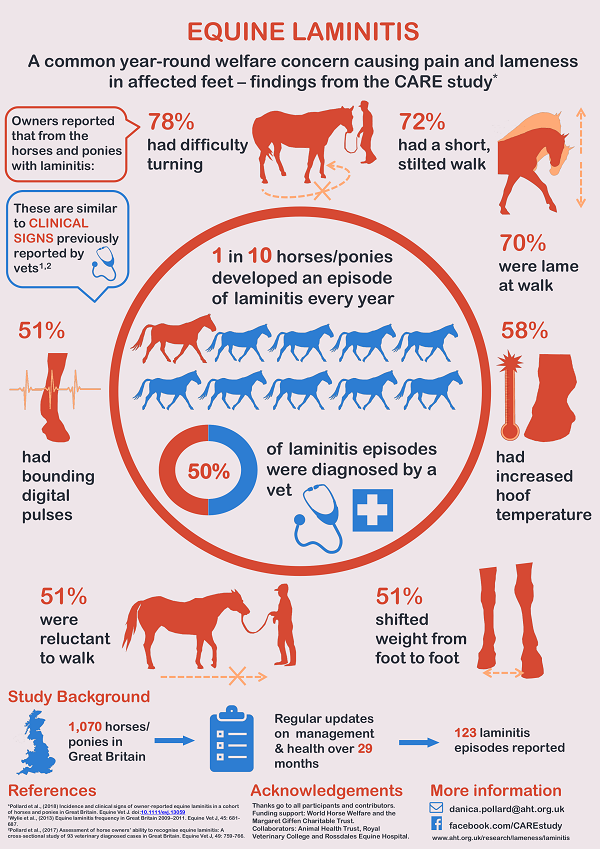
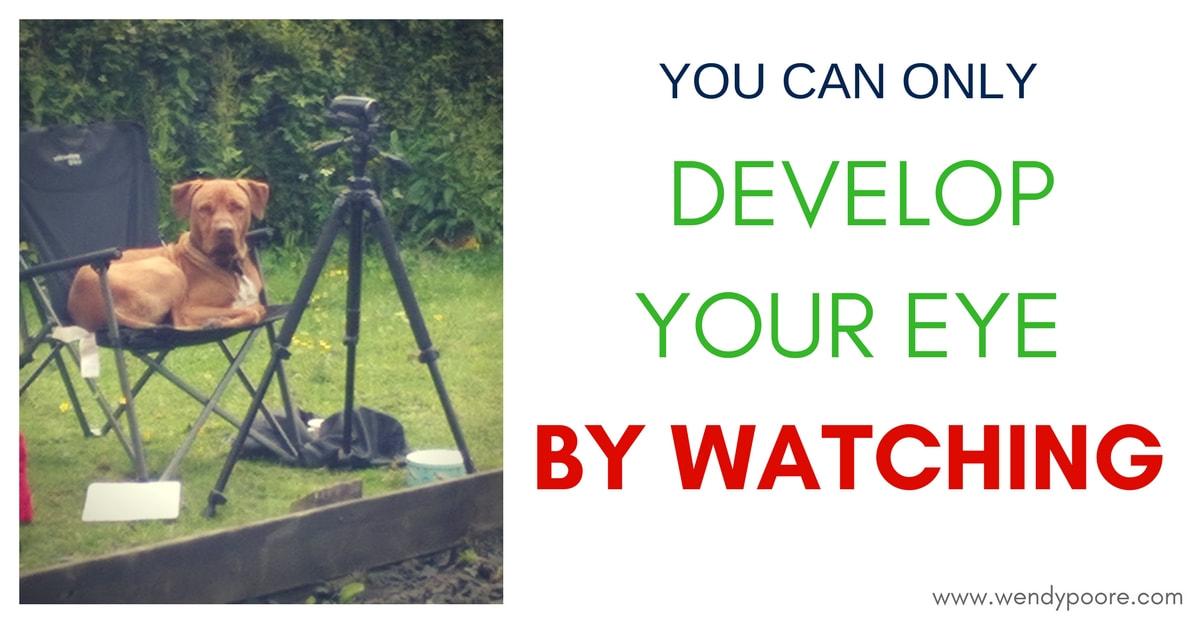
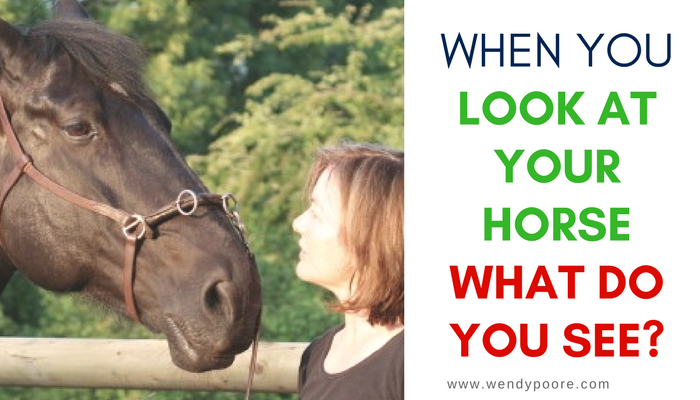
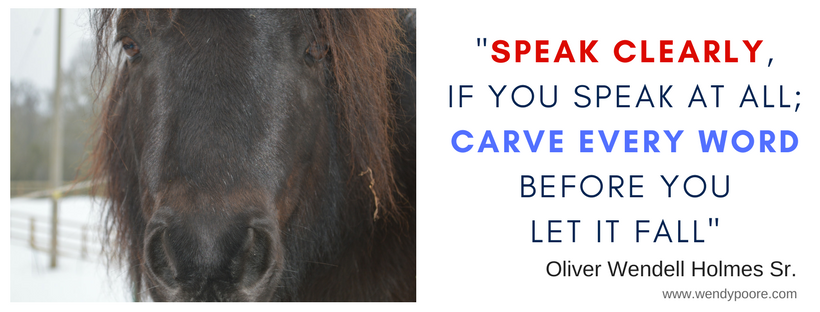
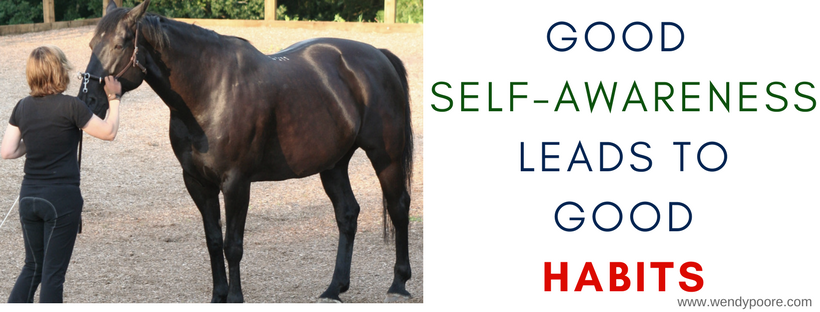
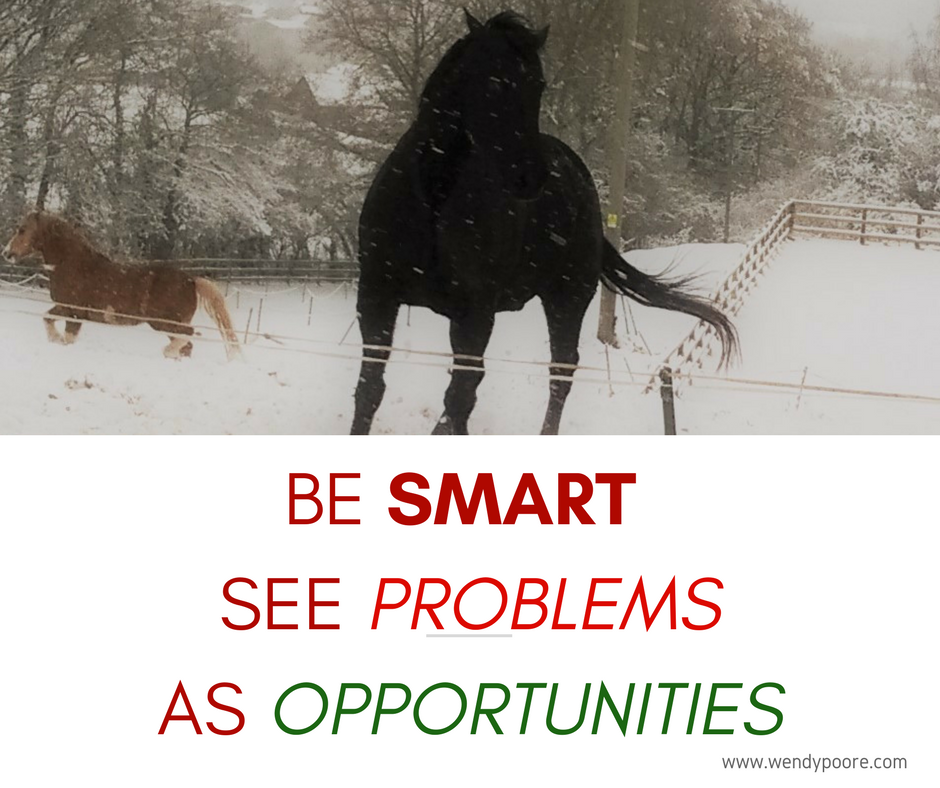

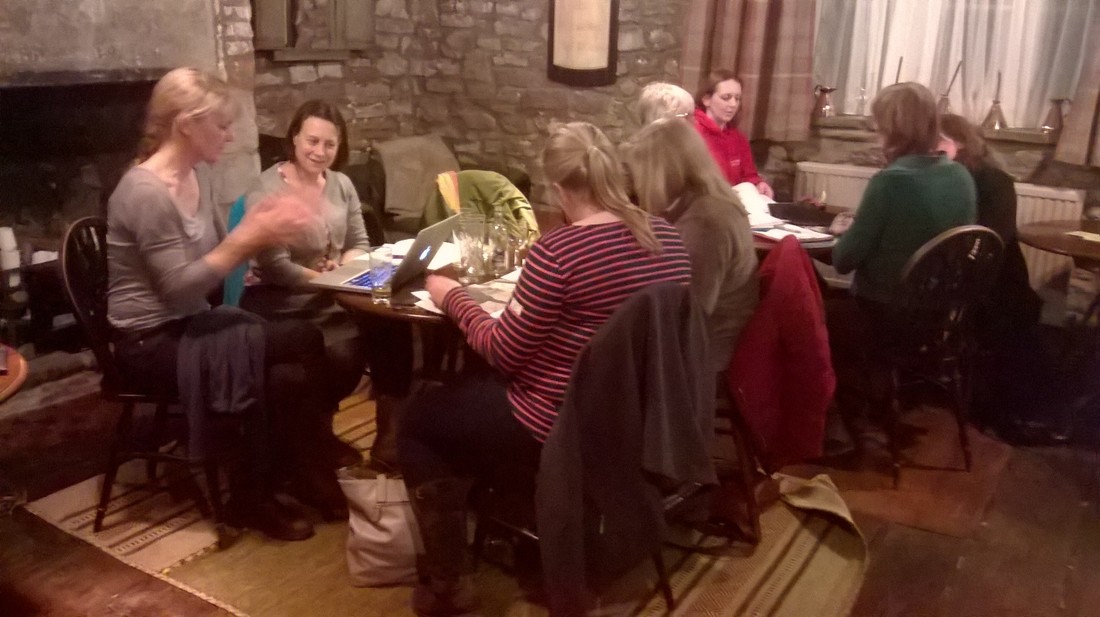
 RSS Feed
RSS Feed